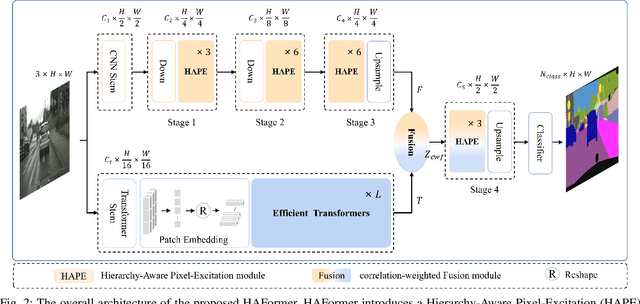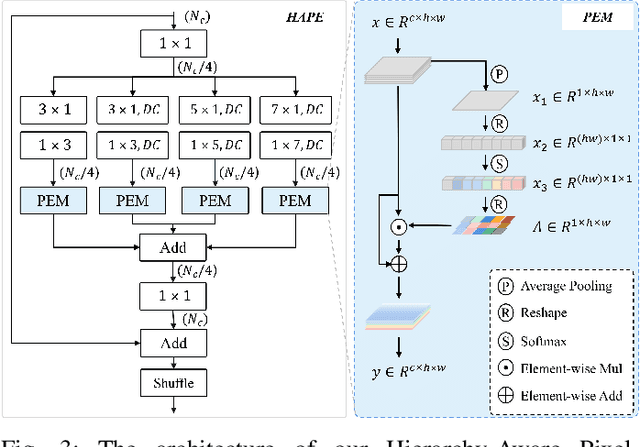Ligeng Chen
MacFormer: Semantic Segmentation with Fine Object Boundaries
Aug 11, 2024



Abstract:Semantic segmentation involves assigning a specific category to each pixel in an image. While Vision Transformer-based models have made significant progress, current semantic segmentation methods often struggle with precise predictions in localized areas like object boundaries. To tackle this challenge, we introduce a new semantic segmentation architecture, ``MacFormer'', which features two key components. Firstly, using learnable agent tokens, a Mutual Agent Cross-Attention (MACA) mechanism effectively facilitates the bidirectional integration of features across encoder and decoder layers. This enables better preservation of low-level features, such as elementary edges, during decoding. Secondly, a Frequency Enhancement Module (FEM) in the decoder leverages high-frequency and low-frequency components to boost features in the frequency domain, benefiting object boundaries with minimal computational complexity increase. MacFormer is demonstrated to be compatible with various network architectures and outperforms existing methods in both accuracy and efficiency on benchmark datasets ADE20K and Cityscapes under different computational constraints.
HAFormer: Unleashing the Power of Hierarchy-Aware Features for Lightweight Semantic Segmentation
Jul 11, 2024



Abstract:Both Convolutional Neural Networks (CNNs) and Transformers have shown great success in semantic segmentation tasks. Efforts have been made to integrate CNNs with Transformer models to capture both local and global context interactions. However, there is still room for enhancement, particularly when considering constraints on computational resources. In this paper, we introduce HAFormer, a model that combines the hierarchical features extraction ability of CNNs with the global dependency modeling capability of Transformers to tackle lightweight semantic segmentation challenges. Specifically, we design a Hierarchy-Aware Pixel-Excitation (HAPE) module for adaptive multi-scale local feature extraction. During the global perception modeling, we devise an Efficient Transformer (ET) module streamlining the quadratic calculations associated with traditional Transformers. Moreover, a correlation-weighted Fusion (cwF) module selectively merges diverse feature representations, significantly enhancing predictive accuracy. HAFormer achieves high performance with minimal computational overhead and compact model size, achieving 74.2% mIoU on Cityscapes and 71.1% mIoU on CamVid test datasets, with frame rates of 105FPS and 118FPS on a single 2080Ti GPU. The source codes are available at https://github.com/XU-GITHUB-curry/HAFormer.
MFPNet: Multi-scale Feature Propagation Network For Lightweight Semantic Segmentation
Sep 12, 2023Abstract:In contrast to the abundant research focusing on large-scale models, the progress in lightweight semantic segmentation appears to be advancing at a comparatively slower pace. However, existing compact methods often suffer from limited feature representation capability due to the shallowness of their networks. In this paper, we propose a novel lightweight segmentation architecture, called Multi-scale Feature Propagation Network (MFPNet), to address the dilemma. Specifically, we design a robust Encoder-Decoder structure featuring symmetrical residual blocks that consist of flexible bottleneck residual modules (BRMs) to explore deep and rich muti-scale semantic context. Furthermore, taking benefit from their capacity to model latent long-range contextual relationships, we leverage Graph Convolutional Networks (GCNs) to facilitate multi-scale feature propagation between the BRM blocks. When evaluated on benchmark datasets, our proposed approach shows superior segmentation results.
 Add to Chrome
Add to Chrome Add to Firefox
Add to Firefox Add to Edge
Add to Edge